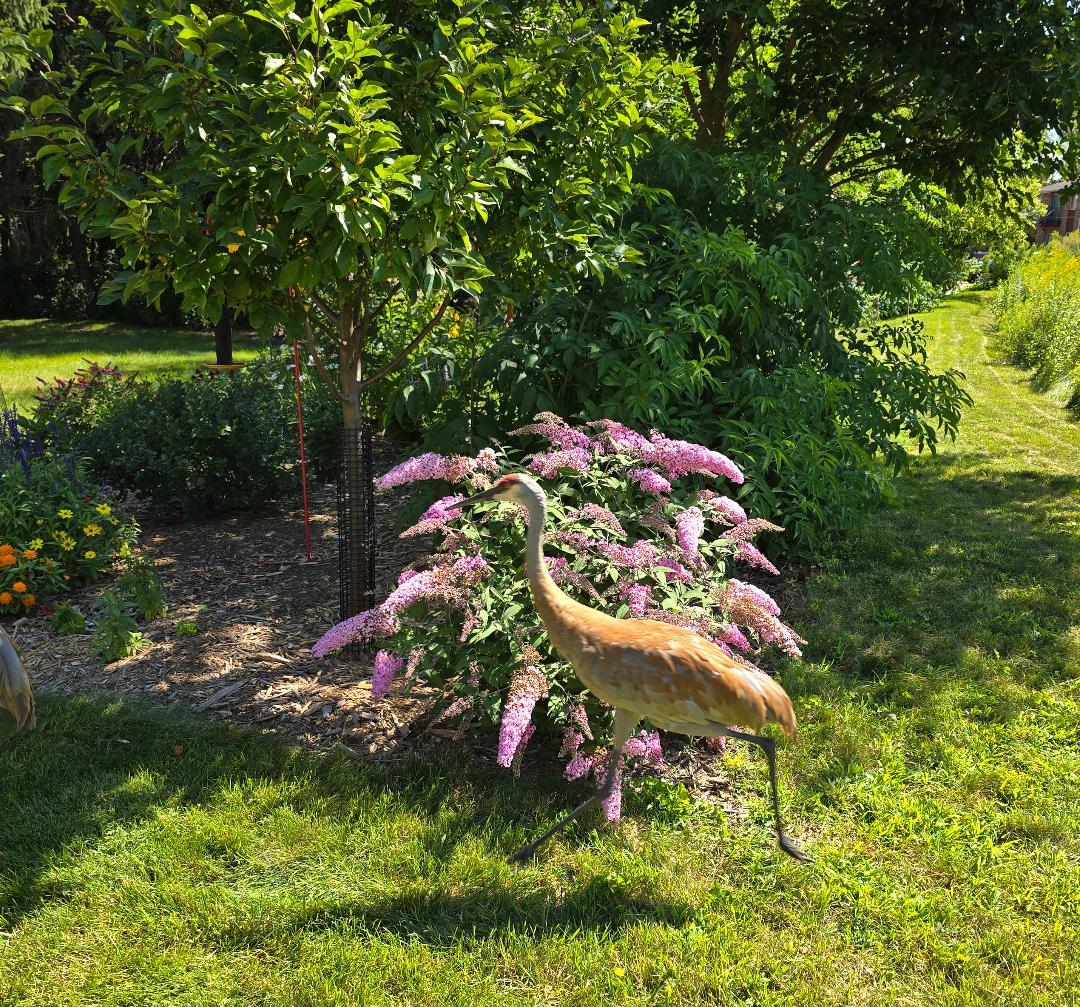Larry Hurley’s Photo Of The Week: Photobomb!

I was about five feet from this butterfly bush that I wanted to write about, and a sandhill crane streaked through the photo.
The butterfly bush, Buddleia ‘Pink Cascade II’, didn’t seem to mind. Butterfly bush is not native, and in many areas, it is invasive. I have photos of it growing in the walls of a lock of the C&O canal, and from from between the stones of a war memorial column in Belgium. This cultivar, which was developed by Walters Gardens in Michigan, is believed by them to be sterile. (Walters is one of the premier wholesale perennial breeders and growers in the US. Their description of Pink Cascade II is on their website.) For a number of my years at Behnke’s I served on various invasive plant committees in Maryland, (assisting my boss at the time, John Peter Thompson, who is well-known in the invasive plants community) as we committed Behnke’s to reducing our sales of ornamental invasive plants such as burning bush and Miscanthus grass. So, I understand the issues.
So, issue two…not native. I have a lot of native plants in my garden: this doesn’t happen to be one of them. It does offer a flower food source for pollinators, including butterflies. The issue with Buddleia is that most foliage- feeding insects don’t eat it since it didn’t evolve in local US plant communities. This reduces the source of food (or prey) for animals that prey on the insects feeding on plants, notably birds. I expect that most of you are familiar with this concept, so wonderfully presented by Dr. Doug Tallamy in Bringing Nature Home, and subsequent books. So, to address this I have planted Joe Pye weed, sedges, wild ginger, several species of Silphium, butterfly weed, and other native perennials, shrubs and trees. Munch away. But, just like I know I should eat healthy, I still like a bowl of ice cream once in awhile (maybe 7 days a week), and I think of the butterfly bush as dessert for the adult butterflies.
One thing that sets this butterfly bush apart for me is that it stays short, topping out at 4 feet (although here in Wisconsin they die to the ground in winter). The size of the inflorescence is amazing, up to 12 inches long, in a pretty shade of pink, and even the buds are attractive, looking almost like fireworks. Without the option of (also non-native) crape myrtles in cold-winter Wisconsin, it gives my a blooming shrub for late summer that isn’t a (sometimes native) hydrangea.


Comments (0)